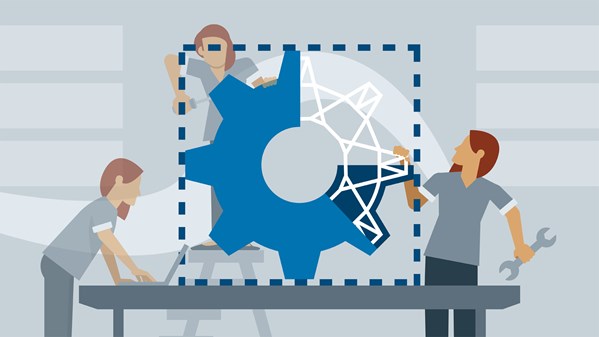
Demande de formation

Lean management focuses on building your organization's capability, innovating your ways of working, and improving the quality of your business outcomes. Lean principles can help in a variety of different industries—including technology, where effectiveness and efficiency are paramount. In this concise course, learn how to leverage lean strategies to kick-start your business transformation. Instructor Barry O'Reilly discusses the improvement kata, explaining how it can be used to tackle problems in an organization and gain a competitive advantage. He also shares how to lead and scale your transformation initiatives.
Demande de formation
For large tech organizations, the path to agile adoption is hardly ever a smooth one. If you're aiming to implement agile at scale, then this course can help by letting you know which pitfalls you may encounter and providing techniques for successfully managing a transformation. Instructor Jez Humble dives into the key principles that are at the heart of high-performance program management. He also provides a case study that showcases an iterative and adaptive approach to running large programs and discusses the importance of continuous improvement.

The Green Belts or Black Belts that lead Lean Six Sigma projects are well-trained and ready to guide your project to the finish line. But what do you, as a team member on a Lean Six Sigma project team, need to know to be effective? In this course, Dr.
Richard Chua provides coverage of fundamental Lean Six Sigma tools that can help you add value to your project. Here, he focuses on the Analyze, Improve, and Control phases of the DMAIC—Define, Measure, Analyze, Improve, and Control—approach. Discover
how Lean Six Sigma integrates lean into DMAIC. Then learn how to conduct analysis using tools like cause-effect diagrams, multi-voting, scatter plots, correlation, and regression. Discover how to improve processes using methodologies such as FMEA
and Kaizen. Finally, find out how to implement controls and value-stream management practices. For information about the first two phases of DMAIC, make sure to check out the previous installment of the Lean Six Sigma Teams series.
Topics include:
- How Lean Six Sigma integrates lean into DMAIC
- Understanding the purpose and steps of the Analyze, Control, and Improve phases
- Using analysis tools
- Hypothesis testing
- Data collection planning
- Improving processes with FMEA, Just in Time, and Kaizen methodologies
- Planning and implementing process controls

Topics include:
● How Lean Six Sigma integrates lean into DMAIC
● Understanding the purpose and steps of the Define phase
● Using process and value stream maps
● Using SIPOC to define the process and its key stakeholders
● Quantifying the cost of poor performance
● Using statistics to summarize baseline performance
● Using Pareto charts
● Using variation plots
Demande de formation

In many ways Kanban is counterintuitive. The system relies on basic rules and practices, and these rules can help you start a large-scale organizational change. The kanban board might only appear to be a simple diagram that shows the team's workflow. But it can help build cross-functional self-organized teams, encourage better collaboration, and increase your team's productivity. Kanban is a key way to introduce lean principles in your organization. Lean can help your teams better prioritize their work and continuously improve by removing the waste or "muda" from your process. In this course, explore essential lean principles and discover how to use a kanban board to help your team prioritize more effectively. Learn about starting enterprise lean, setting up a board, optimizing your flow, and more.

Lean concepts have been successfully applied to every aspect of doing business. In this course, learn the principles of lean and how they are used in processes, production, and services. Instructor Steven Brown also explains how lean thinking impacts the organization, from the overall business culture to day-to-day work activities.
Topics include:
● What is lean?
● Process mapping and reengineering
● Cost and constraints
● Lean manufacturing
● Lean services
● Lean culture
● Lean thinking
Demande de formation

Lean Six Sigma combines the principles of lean enterprise and lean manufacturing with Six Sigma to improve performance and systematically remove waste. Supply chain expert and professor Steven Brown explains the basics of using Lean Six Sigma as a structure
for your improvement efforts.
Steven outlines the process stages in Six Sigma (define, measure, analyze, improve, and control), along with the Lean toolkit: the 5s principles, kanban (scheduling), downtime, poka-yoke (error proofing), and kaizen
(continuous improvement). He also explains how leadership works within Lean Six Sigma, the principles of project execution, and how Lean Six Sigma is applied to the service sector and supply chain management. Make sure to watch the "Next steps" video
at the end of the course for further resources.

Demande de formation
